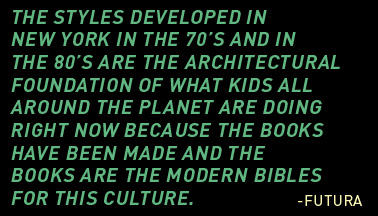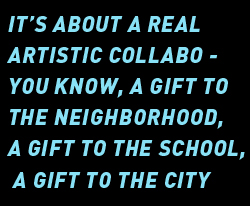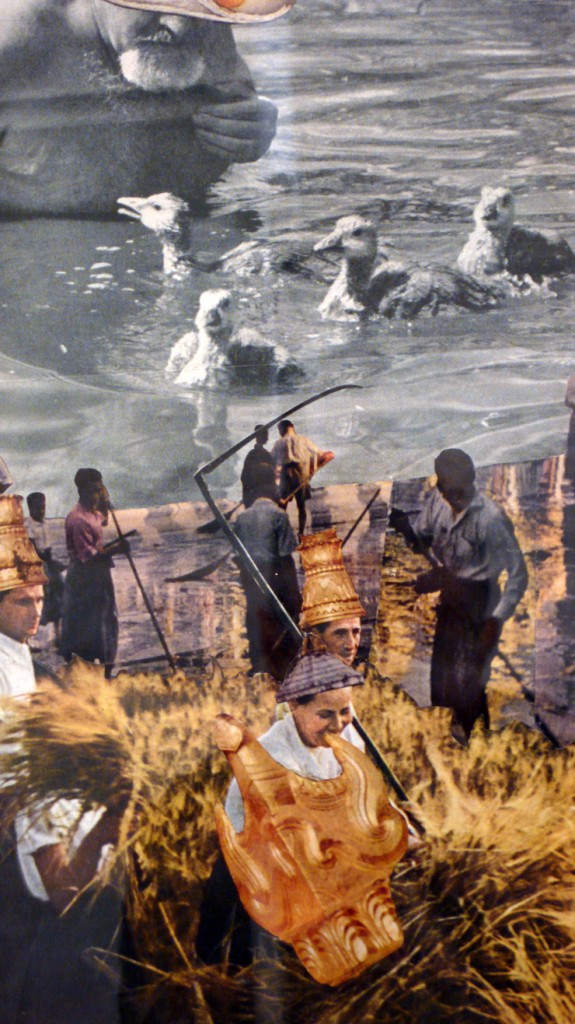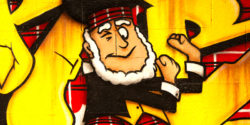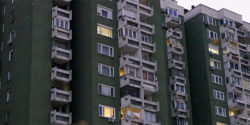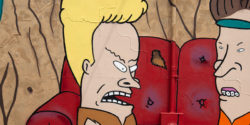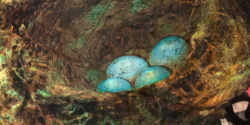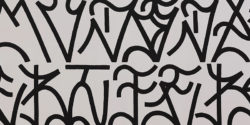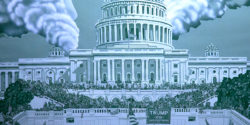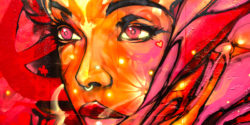It is an age of self-discovery, and the twins continue to be surprised by what they find as they attack huge walls with zeal and precision in New York, LA, Miami, Stavanger, Prague, Las Vegas, Rochester, Philadelphia, Rio – all in the last 12 months. Now while they prepare for their new pop-up show, “Late Confessions”, to open in Manhattan in a couple of weeks, the combined subconscious of How & Nosm is at work, and on display are the personal storylines they will reveal if you are paying close attention.
How & Nosm. Detail. (photo © Jaime Rojo)
It’s a crisp sunny Saturday in Queens and we’re in the studio of a secured elevator building with cameras and clean floors and air thick with aerosol. Davide (or is it Raoul?) is on his knees with a tub of pink plastering goo, applying and smoothing and sanding this large oddly-shaped structure. When it is painted it will debut in the newly renovated Chelsea space whose walls were destroyed during the flooding of falls’ super storm “Sandy”. The gallery space of Jonathan Levine wasn’t large enough for the scale the brothers have grown accustomed to working with, so this more cavernous temporary location will take on a feeling of being part exhibition, part theme park.
How & Nosm. At work on a sculpture. (photo © Jaime Rojo)
The impermanent sculpture of pressed cardboard is rocking between his knees as he straddles the beast and chides his dog Niko for jumping up on it. Rather than a sculpture, you may think it’s a prop for a high school play at this phase, but soon it will become a shiny black beacon of psychological/historical symbolism culled from the collection of objects they gather in travel. Born from the imagination of the brothers and affixed with bird decoys, clock faces, large plastic blossoms, and a rotary dial telephone, these rolling clean lines and saw-toothed edges of these sculptures will glisten under a heavy coating of midnight lacquer soon.
How & Nosm. Detail from a sculpture. (photo © Jaime Rojo)
Like so much of the work HowNosm choose for their sweeping street murals, these new pieces may be read as undercover confessions of artists on display, but you’ll need to figure that out on your own.
How & Nosm. Detail. (photo © Jaime Rojo)
As you walk through the high-ceilinged studio, the excited twins talk continuously in their deep baritones at the same time at you around you and in German to each other. The barrage of stories are spilling out and trampling and crashing like cars off rails; An energetic parlay of authoritative statements and direct questions about work, walls, gallerists, graffers, cops, trains, toys, techniques. All topics are welcomed and examined, sometimes intensely. Sincere spikes of laughter and sharp swoops of fury act in concert: clarifying, praising, and dissing as they swirl in a rolling volley of goodness, pleasantly spliced with a caustic grit.
How & Nosm. Detail. (photo © Jaime Rojo)
Looking at the precise lines and vibrant patterns at play in their work today, there is a certain cheerfulness and high regard for design in the compositions and sense of balance. Both of them site influences as wide as early graffiti, later wild style, cubism, and the abstractionists in their work. Fans are attracted to the confident and attractive illustrative depictions of scenes and characters, appreciating the ever strengthening free-hand command of the aerosol can and stencil techniques that HowNosm have demonstrated in their machine-like march through the streets of world over the last decade plus.
How & Nosm. Detail. (photo © Jaime Rojo)
Though they estimate they have visited over 70 countries, they still love New York and both call Brooklyn their home right now. And while the work they do hits a pleasure center for many viewers, time with both reveals that the stories within can be anything but cheerful. Raoul characterizes their work as dark and negative, born from their shared past, the adversity of their childhood.
“Negative sounds… I don’t know if that’s the right word for it,” says Davide, “but it’s not the bright side of life.”
How & Nosm. Detail. (photo © Jaime Rojo)
And so goes the duality you’ll find everywhere – a study of opposites intertwined. One paints a skull in the half circle, the other paints it’s reflection alive with flesh. You’ll see this split throughout, unified.
“We came from one sperm. We split in half,” says Raoul. “Life, death, good, bad. We’re one, you know. We used to do pieces by ourselves with graff – you know I would do “How” and he would do “Nosm” – then with the background we would connect. Now we would just do pieces with our name “HowNosm” together as one word. I never do a How anymore, really.”
Their early roots in graffiti are always there, even as they became labeled as Street Artists, and more recently, contemporary artists. But it’s a continuum and the line may undulate but it never leaves the surface. Davide describes their auto-reflexive manner of moving from one icon or scenario to another seamlessly across a wall and he likens it to a graffiti technique of painting one continuous stream of aerosol to form a letter or word.
How & Nosm. Detail. (photo © Jaime Rojo)
“It’s like a ‘one-liner’,” he says, referring to the graffiti writer parlance for completing a piece with one long line of spray. “That’s kind of far from what we are doing right now but it is all kind of one piece. The line stops but it kind of continues somewhere. We are refining and refining, and it takes time to develop.”
Blurring your eyes and following the visual stories, it may appear that a spiral motion reoccurs throughout the red, black, and white paintings of HowNosm. Frequently the pattern draws the viewers eye into the center and then swirls it back out to connect to another small tightening of action. While we talk about it Raoul traces in the air with his index finger a series of interconnected spiral systems, little tornadoes of interrelated activity.
How & Nosm. Detail. (photo © Jaime Rojo)
This technique of creating inter-connected storylines is a way of intentional communication and storytelling, and how they describe events and relationships. It is an approach that feels sort of automatic to the brothers. “Our pieces make you think. You look and look and you find more images and you try to understand the whole concept,” says Davide. “I think you can spend quite some time just looking at one piece. You start somewhere and you can develop a story around it but you go somewhere else in the piece and you may do the opposite.”
Would you care to make a comparison to those other well known Street Art twins, Os Gemeos? They are used to it, but aside from being brothers of roughly the same age who began in graffiti and work on the streets with cans, they don’t find many similarities.
“Our stuff is more depressing,” says Raoul, “and way more critical. We talk about the negative aspects and experiences in life.” How much is autobiographical? As it turns out, it is so autobiographical that both brothers refer to their painting historically as a therapy, a cathartic savior that kept them out of jail and even away from drugs growing up.
“We kind of had a very disturbed childhood,” explains Raoul, “Welfare too, so…. I smile a lot and shit but in my paintings I think it is more important to express myself with what most people want to suppress and not show, you know? There’s a lot of love stuff, too. Like heartbroken stuff, financial situations – about myself or other people.”
How & Nosm. The sun goes through a hand cut stencil. (photo © Jaime Rojo)
Davide agrees and expands the critical thinking they display in these open diaries to include larger themes they address; deceptively rotten people, corporate capitalism, familial dissension, hypocrisy in society, corruption in government. It’s all related, and it is all right here in black and white. And red.
“Ours are continuing lines,” Davide says as he traces the canvas with his fingers, “Like this knife here is going to turn into a diamond.”
Niko provides security and inspiration at the studio. (photo © Jaime Rojo)
How & Nosm. Detail of a completed sculpture. (photo © Jaime Rojo)
How & Nosm. Detail of a completed sculpture. (photo © Jaime Rojo)
How & Nosm (photo © Jaime Rojo)
How & Nosm’s pop-up exhibition “Late Confessions” with the Jonathan Levine Gallery opens on February 1st. at 557 West 23rd Street, New York, NY 10011. Click here for more details.
<<>>><><<>BSA<<>>><<<>><><BSA<<>>><><<>BSA<<>>><<<>><><BSA
Please note: All content including images and text are © BrooklynStreetArt.com, unless otherwise noted. We like sharing BSA content for non-commercial purposes as long as you credit the photographer(s) and BSA, include a link to the original article URL and do not remove the photographer’s name from the .jpg file. Otherwise, please refrain from re-posting. Thanks!
<<>>><><<>BSA<<>>><<<>><><BSA<<>>><><<>BSA<<>>><<<>><><BSA
 BROOKLYN STREET ART LOVES YOU MORE EVERY DAY
BROOKLYN STREET ART LOVES YOU MORE EVERY DAY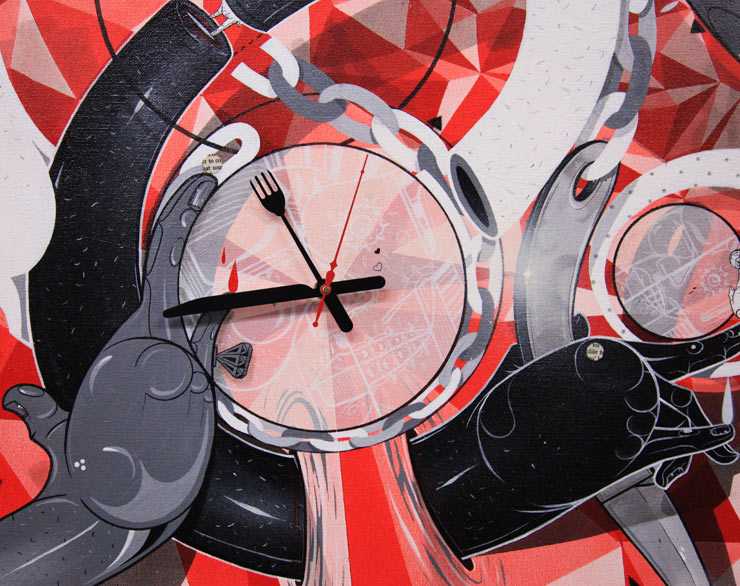
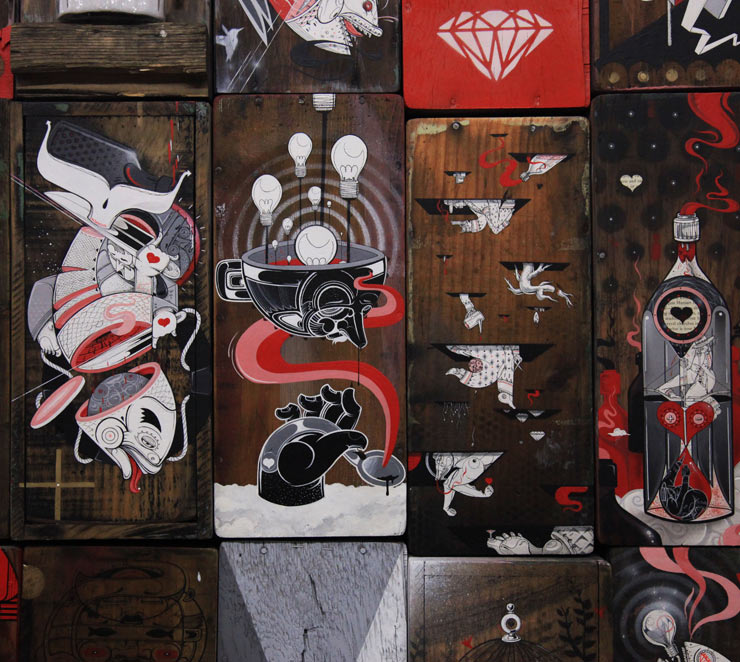
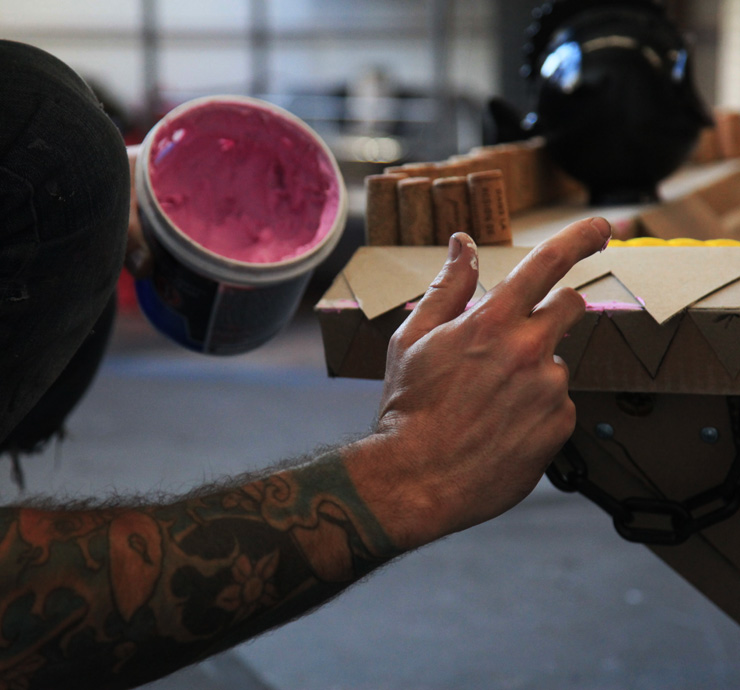
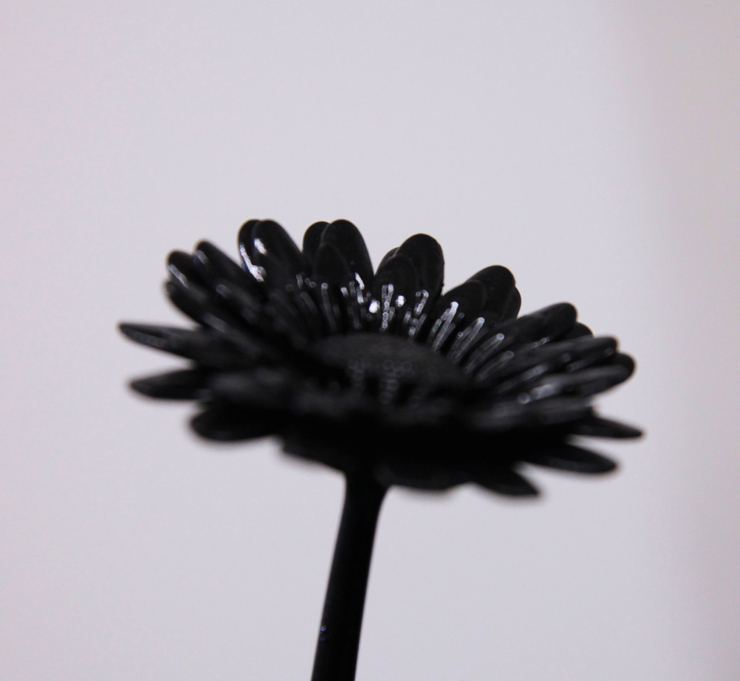
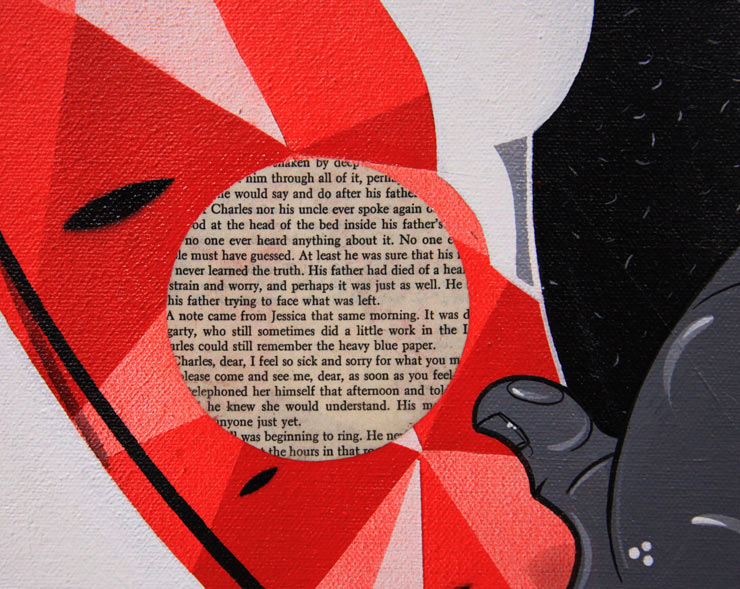

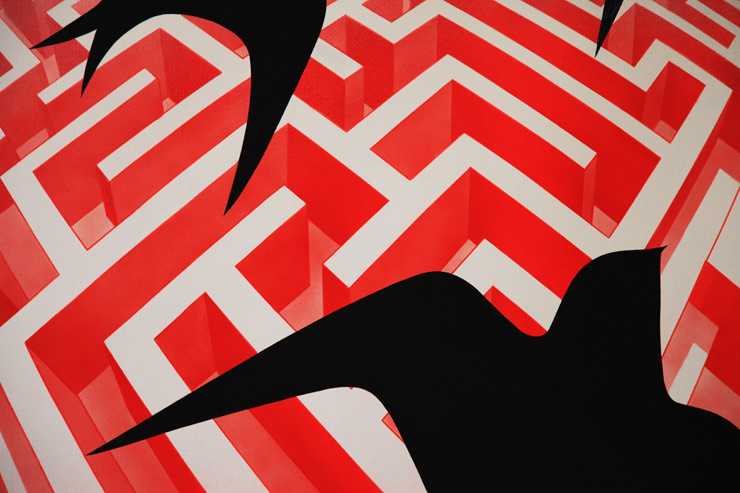
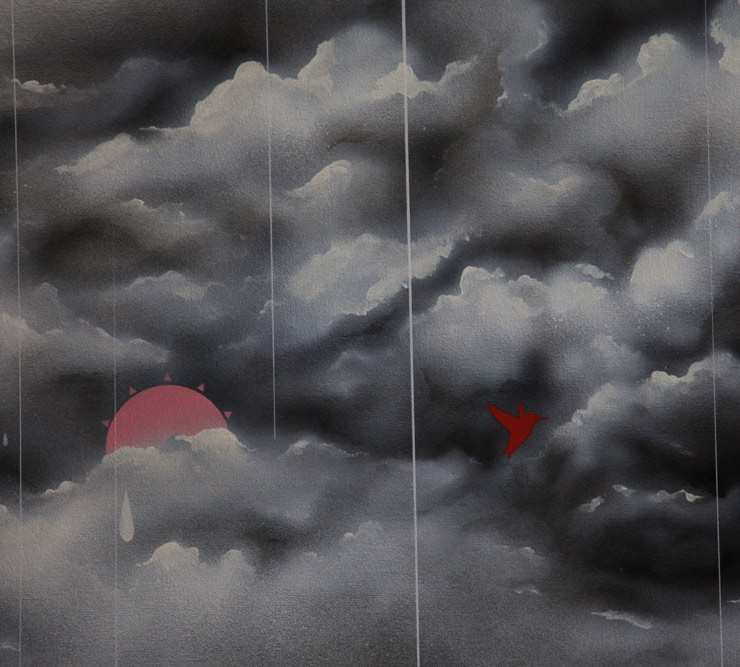

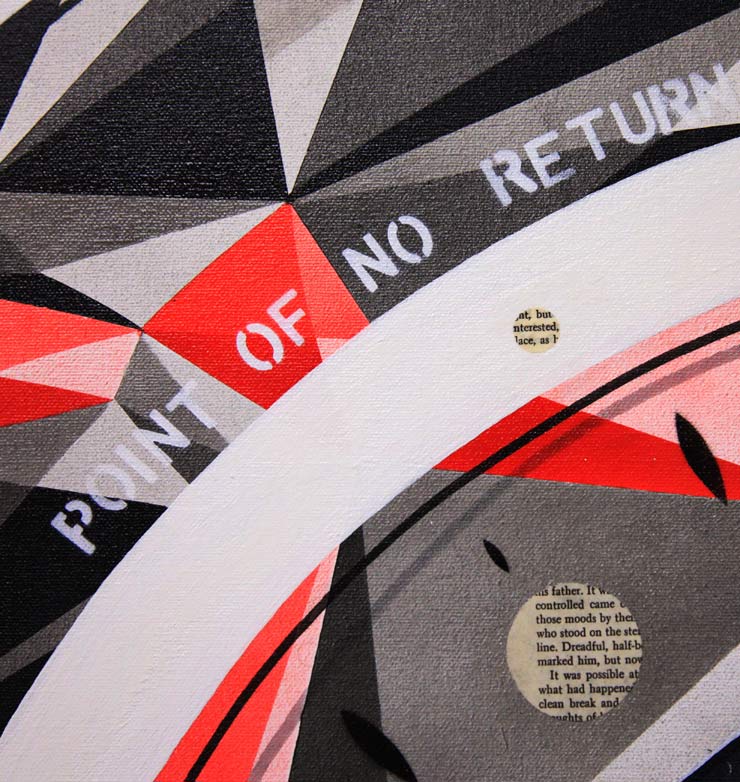
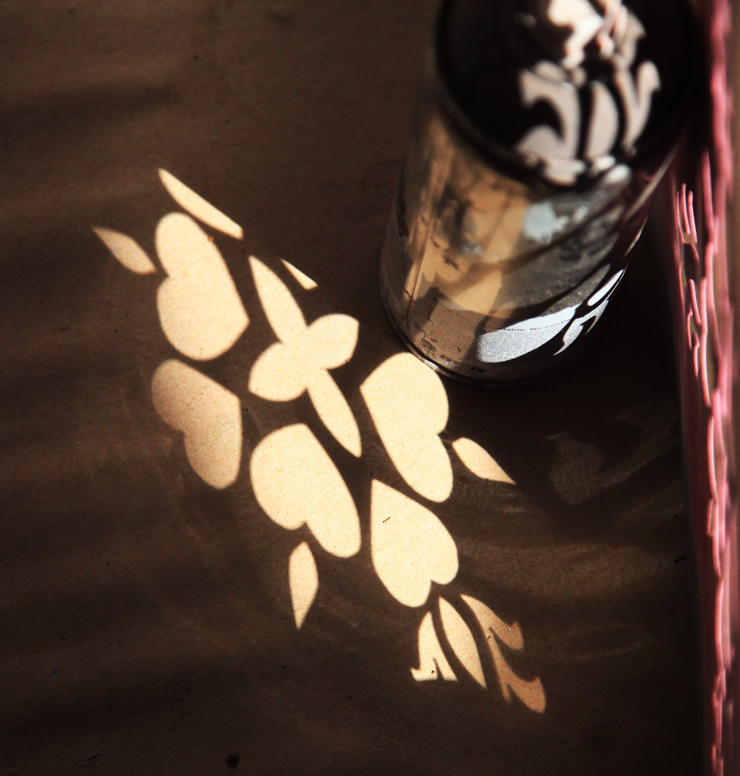
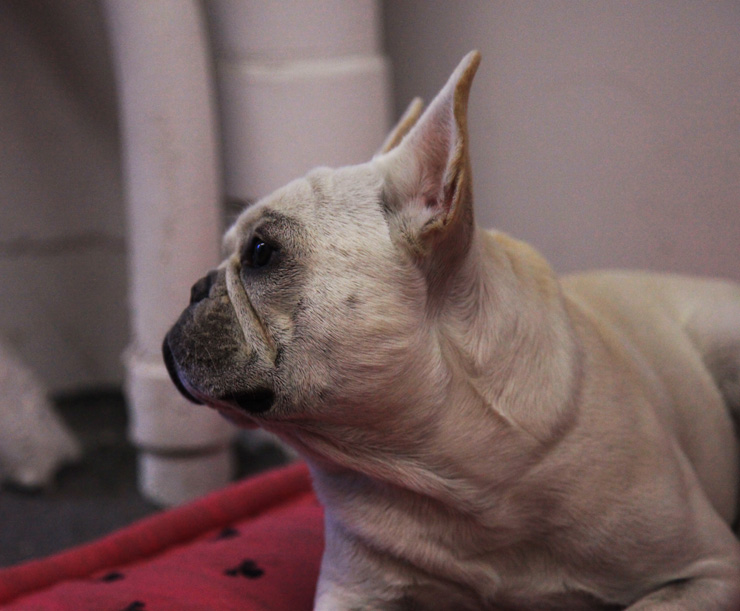
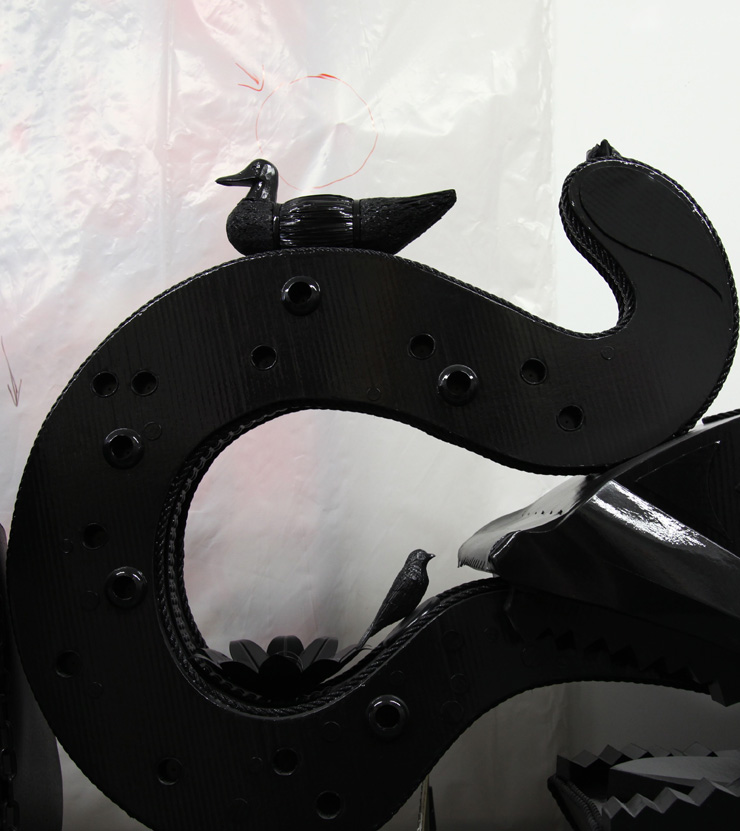
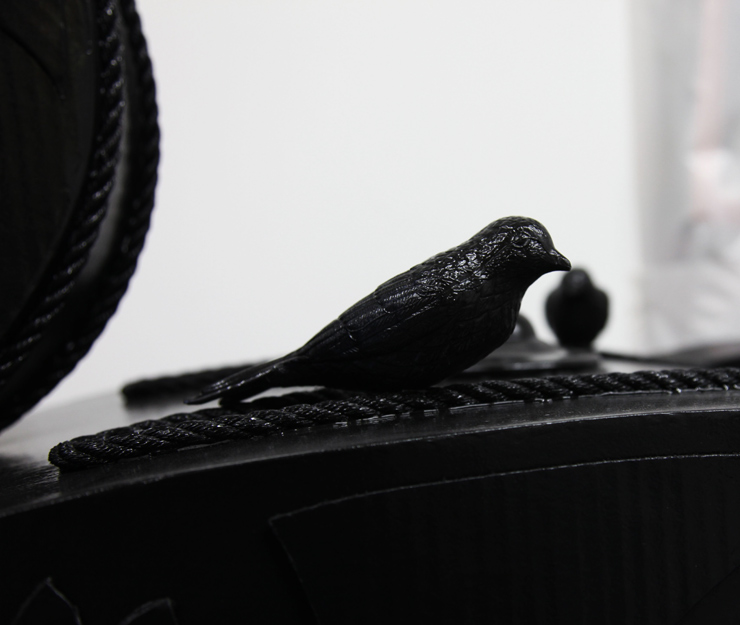
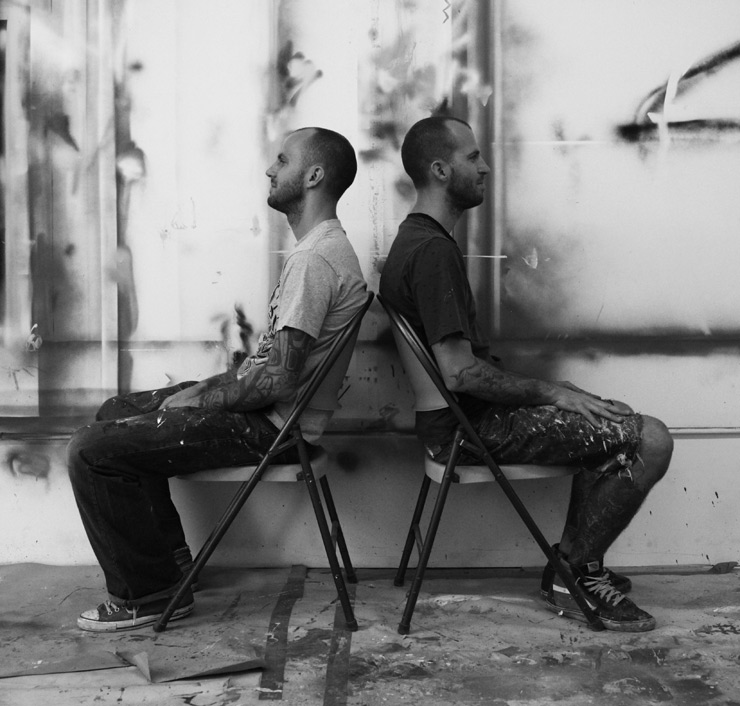
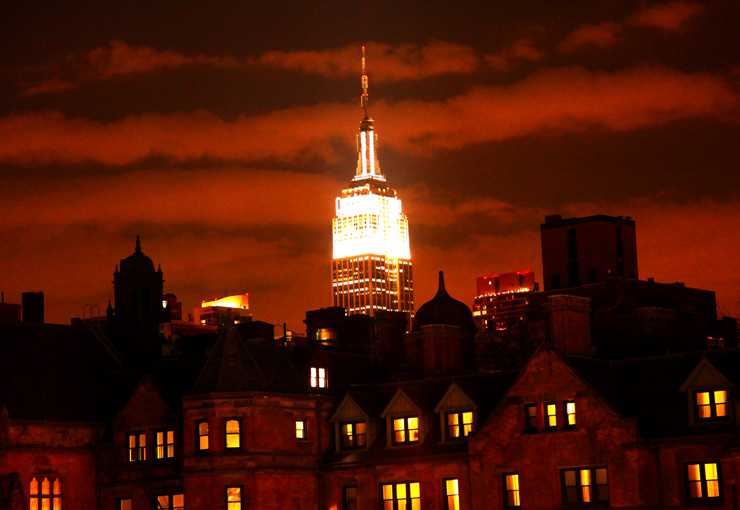

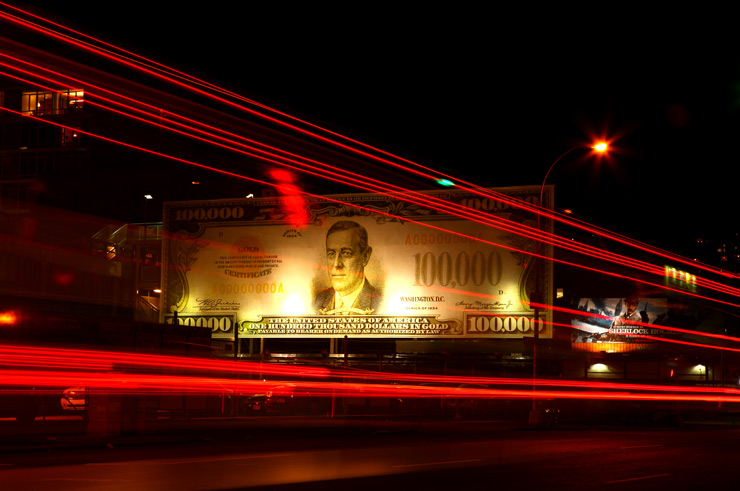
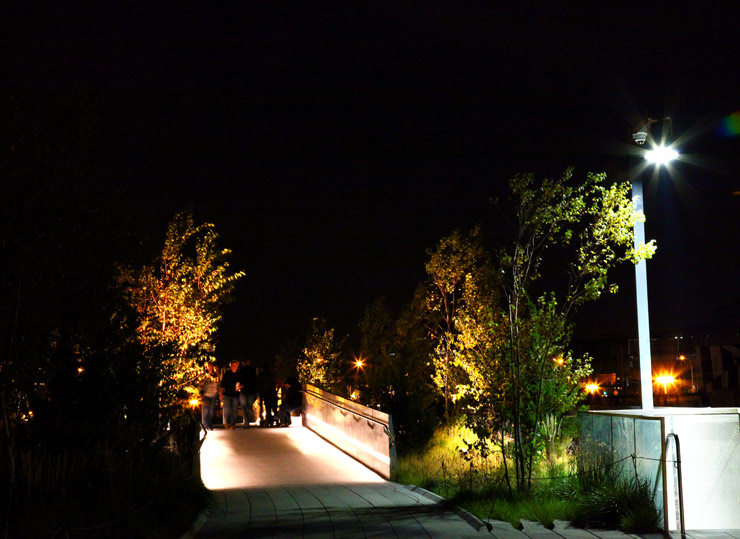
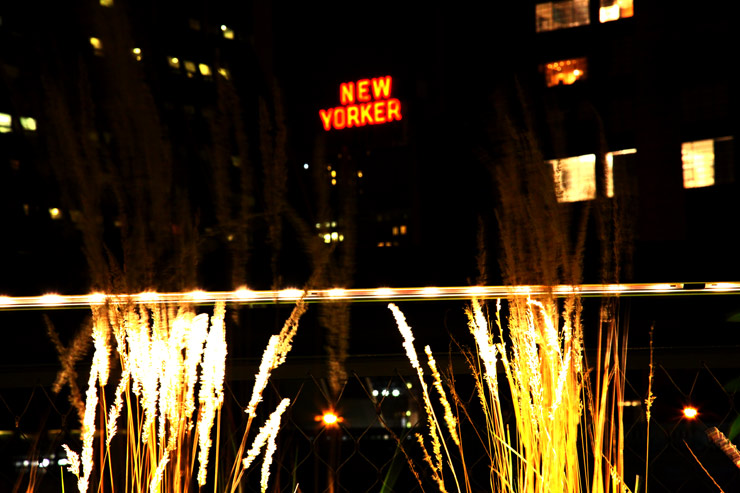
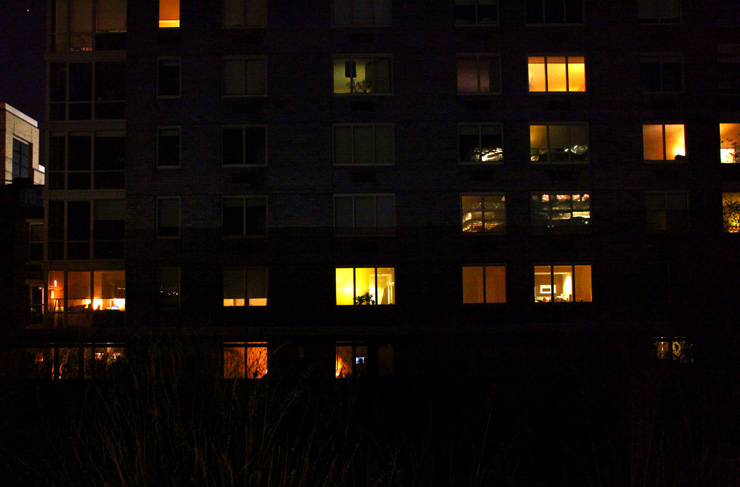
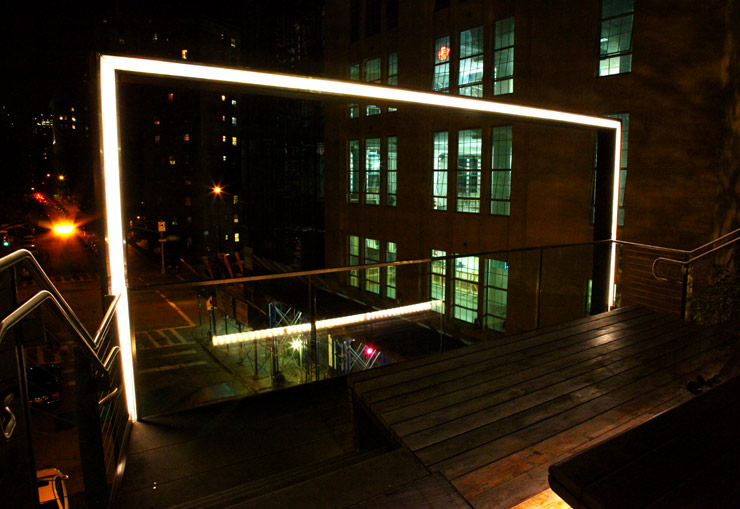
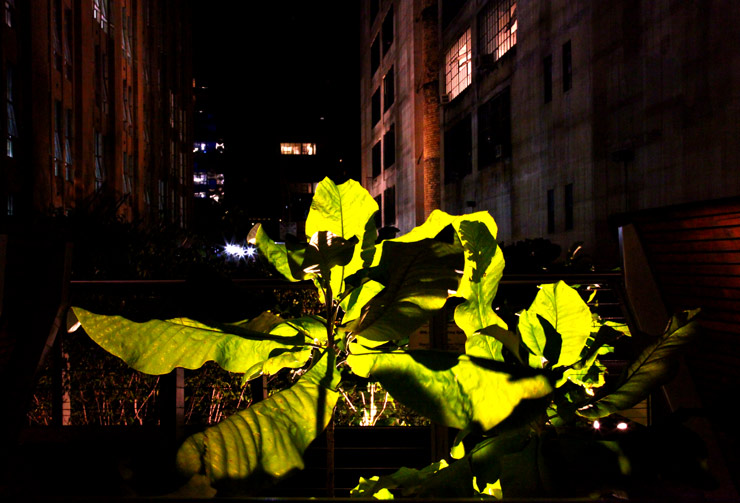
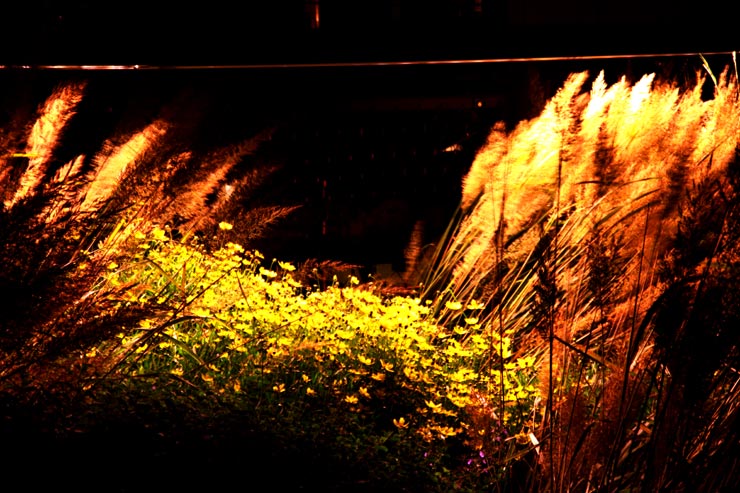
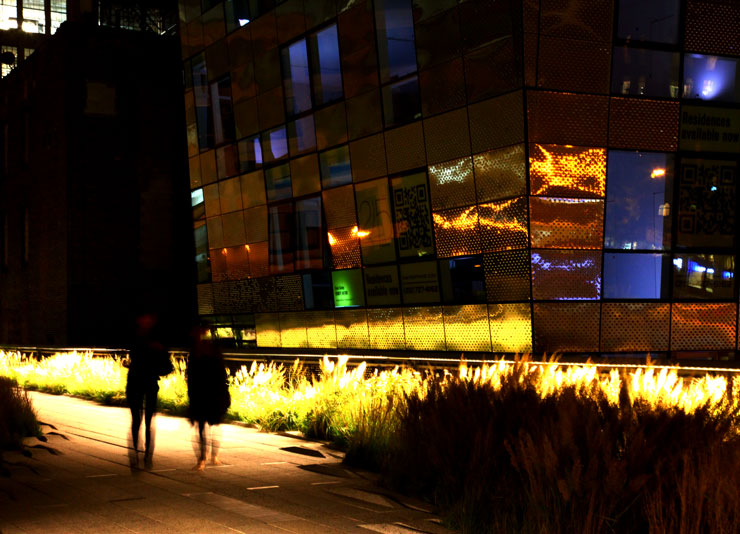
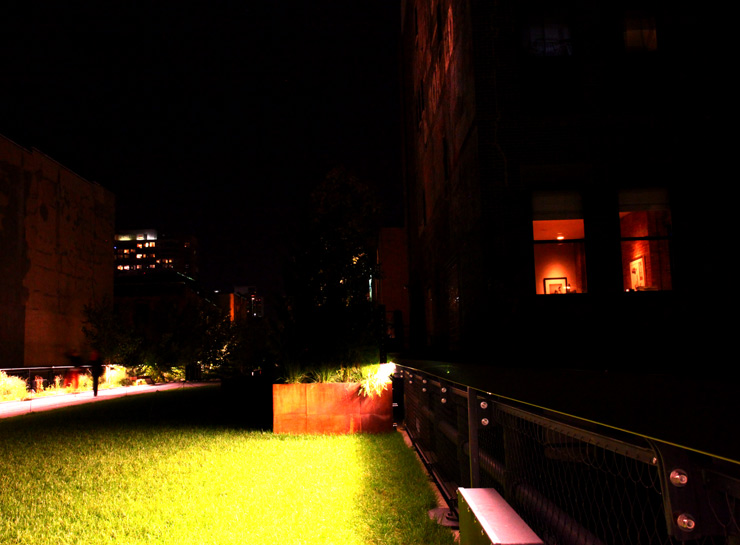

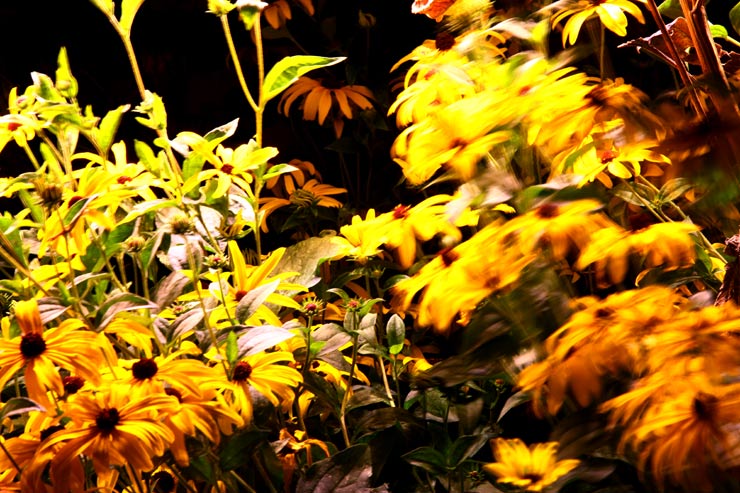
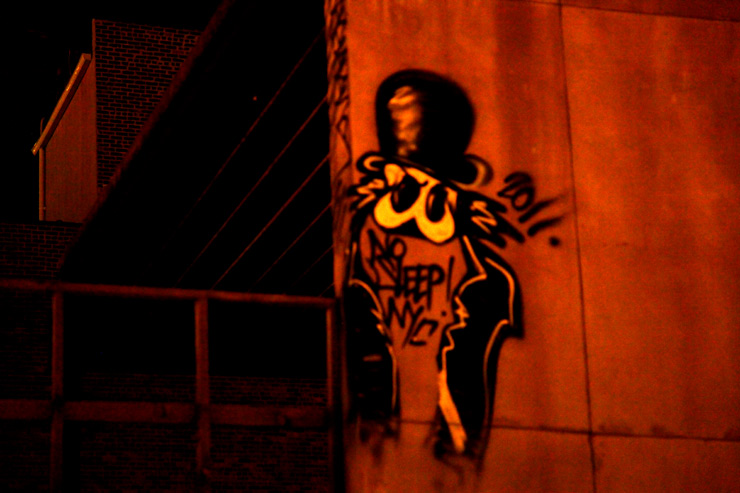
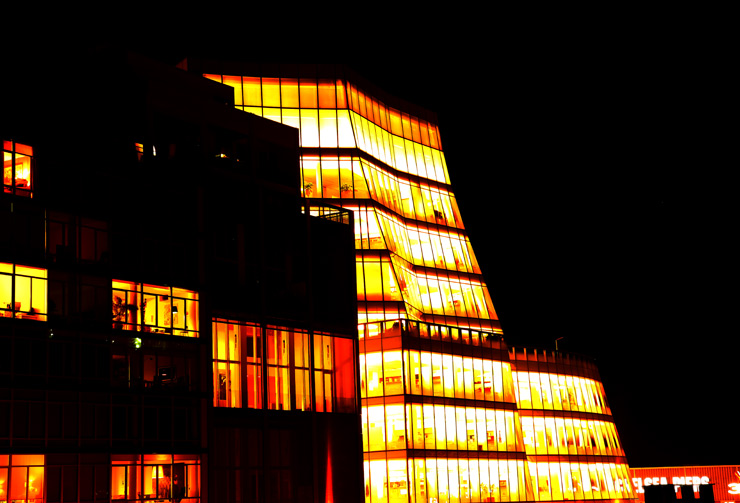
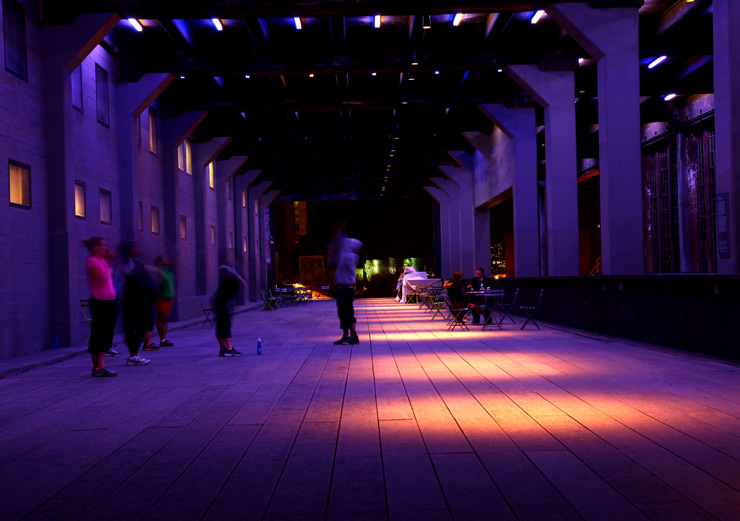
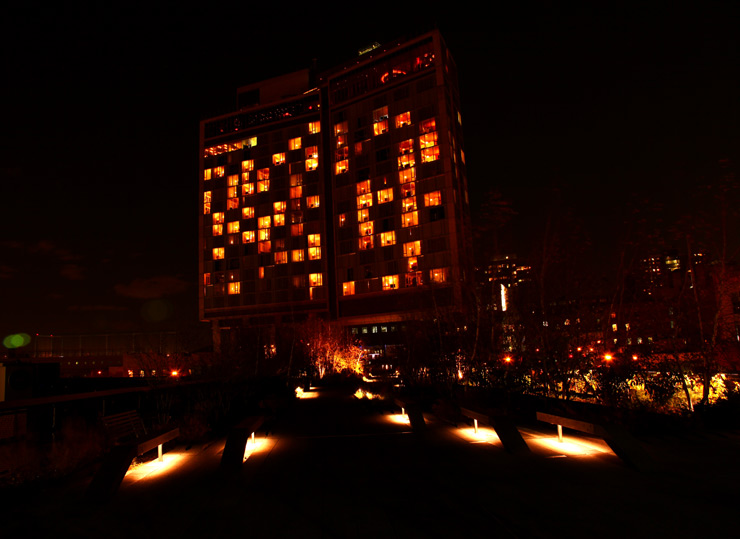
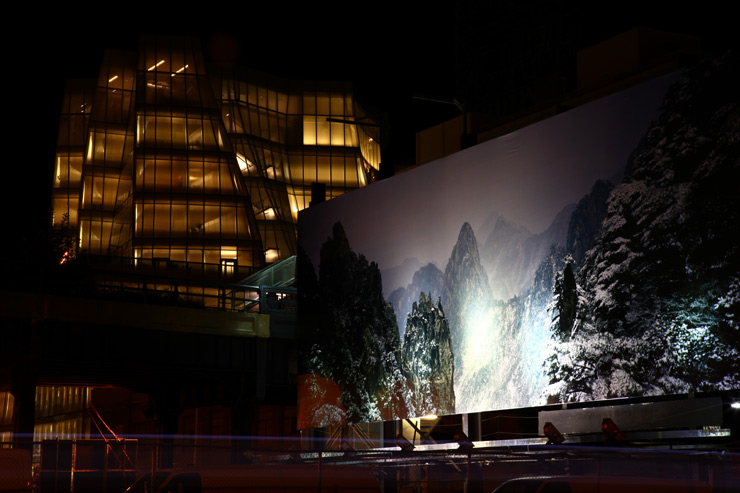

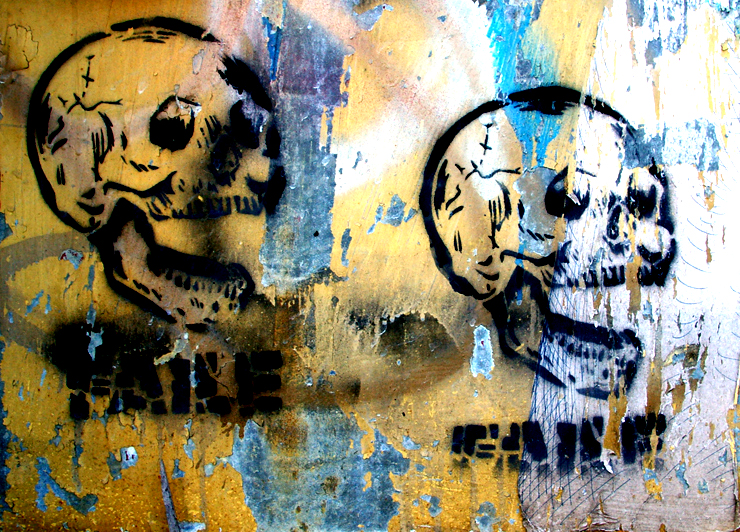
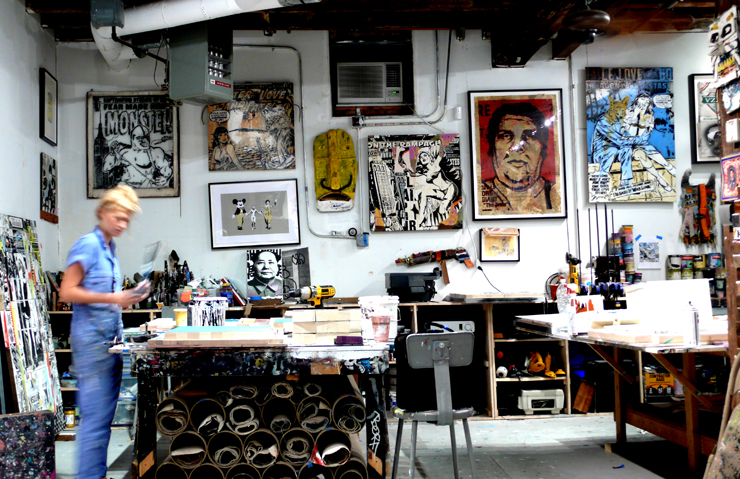
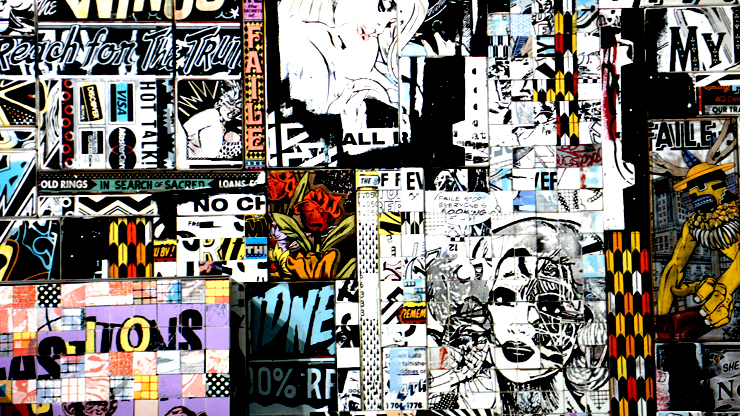
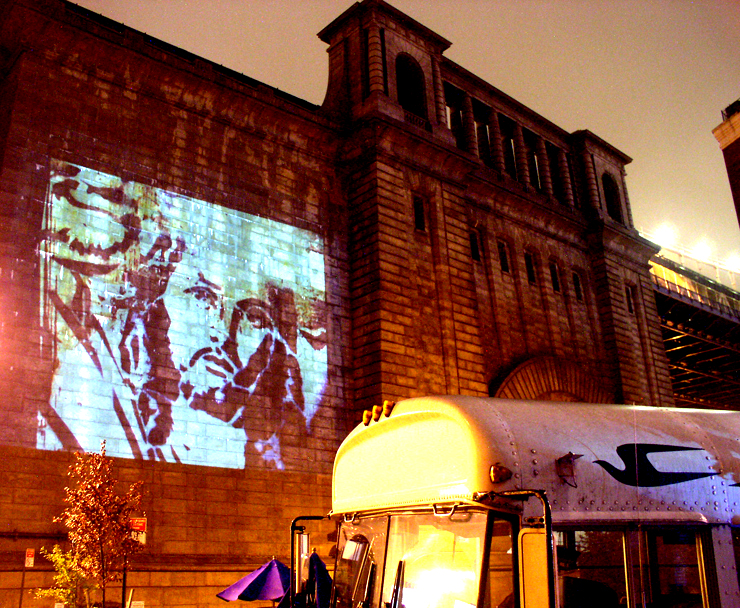

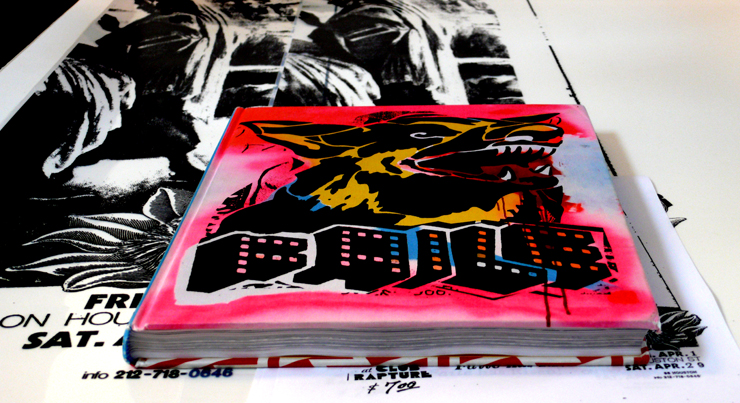

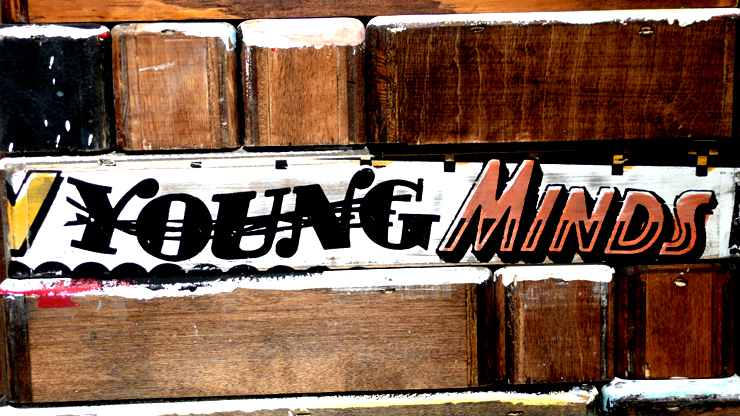


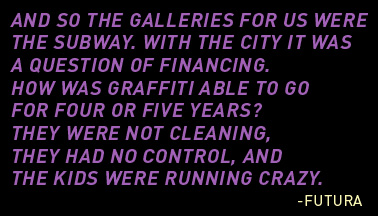 Some of the above-ground things that were graffiti; Graffito in the classic sense of the word; cave drawings, scribbling – were anti-war messages, religious promises. It was a moment of people trying to make a message and maybe some possible enlightenment, where there was something positive coming from it.
Some of the above-ground things that were graffiti; Graffito in the classic sense of the word; cave drawings, scribbling – were anti-war messages, religious promises. It was a moment of people trying to make a message and maybe some possible enlightenment, where there was something positive coming from it.